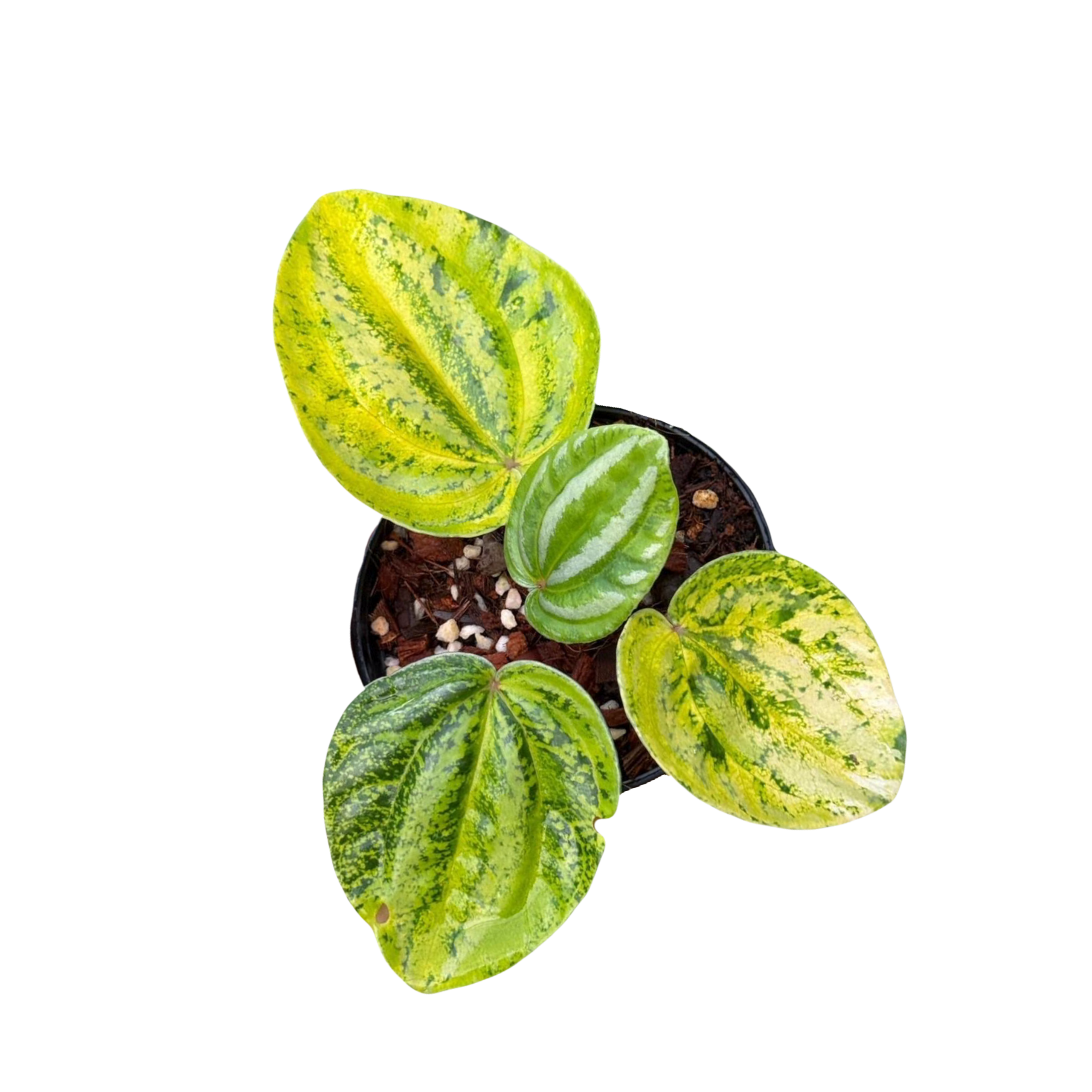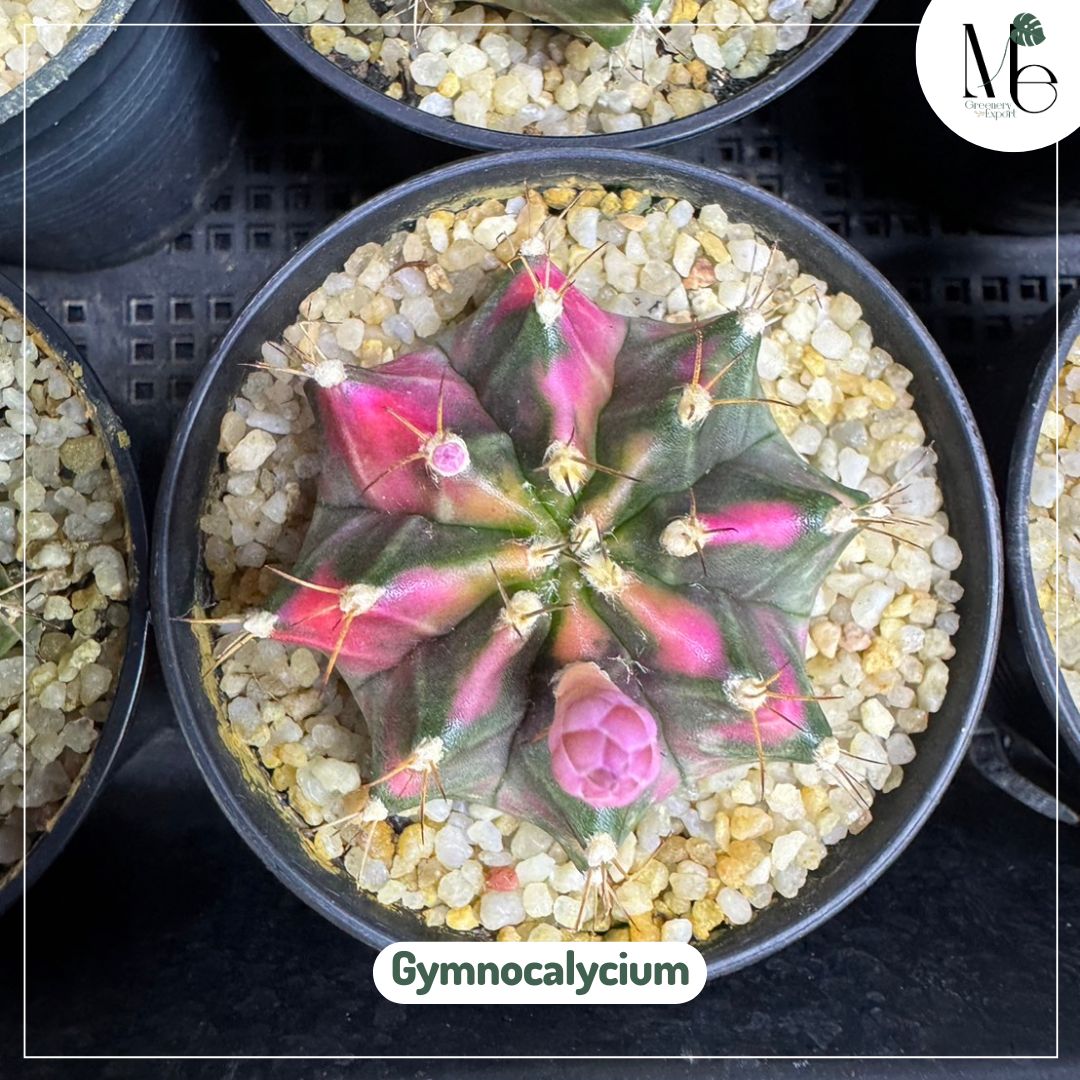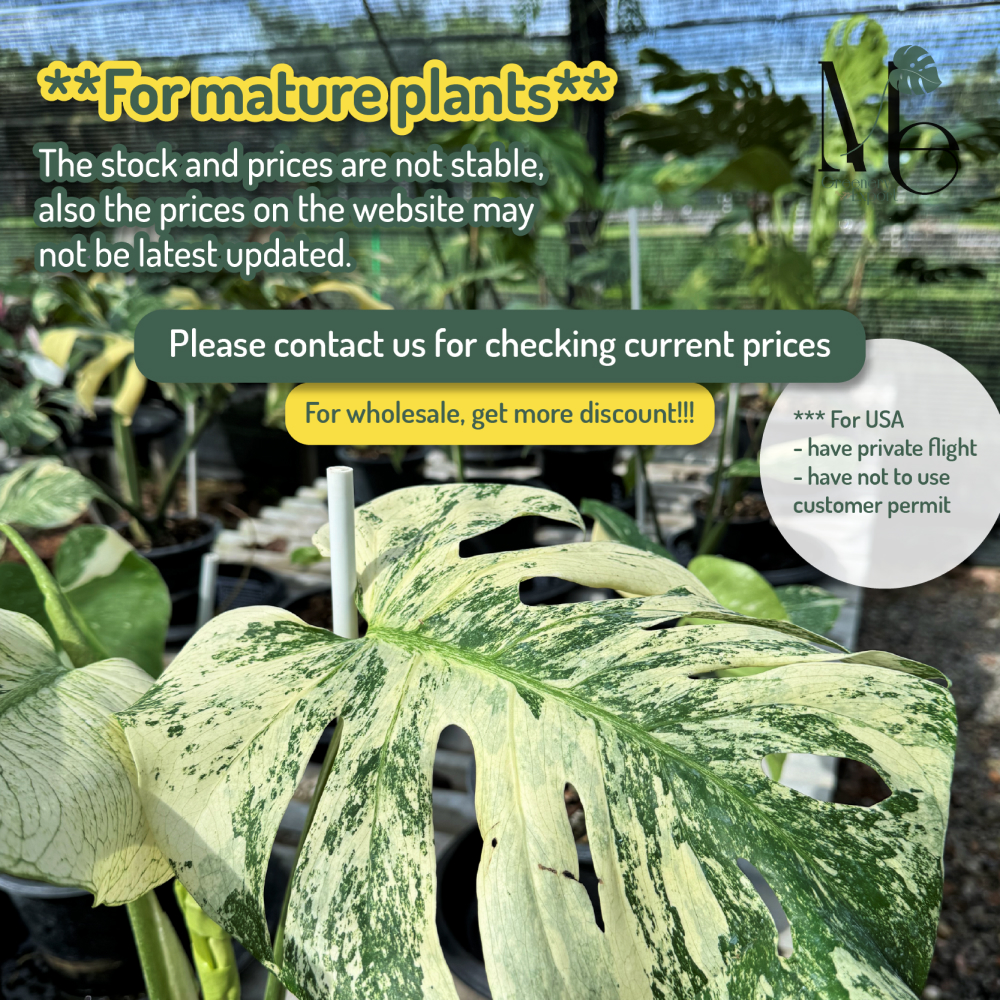Showing all 6 resultsSorted by latest
Sansevieria Kirkii Pulchra Coppertone Variegated
This is not your average snake plant. Sansevieria kirkii Pulchra Coppertone Variegated brings a bold, sculptural elegance to any plant collection with its wide, undulating leaves, glowing in deep bronzy-copper tones. The variegation adds subtle striations or marbled streaks of cream, lime, or even silvery green, depending on light exposure. It’s a rare cultivar that combines toughness with serious ornamental appeal. How to care Light: Thrives in bright, indirect light but tolerates low light. Brighter light enhances coloration and variegation. Watering: Very drought-tolerant. Water sparingly — let soil dry completely between waterings. Humidity: Not picky. Tolerates dry indoor air very well. Temperature: Prefers warmth (65–85°F / 18–29°C). Protect from frost. Soil: Fast-draining cactus or succulent mix with added perlite or pumice.
Start from $/ plant
How to order *The first image is just for advertising. [post-views]Share this:
Peperomia Watermelon Variegated
Peperomia Argyreia Variegata, commonly known as Peperomia Watermelon Variegated, is one of rare Peperomia that has cute circlely green leaves with watermelon-like patterns and, even more beautiful, the variegated parts. Adding more lively to your place with its adorable appearance, this plant is going to pop-out of the zone where you place it. Such a lovely plant! How to care Light: Bright, indirect light (variegation fades in low light; burns in direct sun) Watering: Allow top 50% of soil to dry out between waterings; prefers slightly dry conditions over too wet Humidity: Moderate (40–60%), tolerates average indoor humidity Temperature: 18–26°C (65–80°F); avoid cold drafts or temps under 12°C (55°F) Soil: Well-draining potting mix (cactus mix + perlite is great) How to order *The first image is just for advertising. [post-views]
Share this:
Haworthia Koelmaniorum
Haworthia Koelmaniorum is a paradise for haworthia enthusiasts! This variety showcases a diverse range of captivating forms, many of which resemble the texture of reptile skin. Their unique characteristics will add vibrancy and excitement to any space, no matter where you display them.
How to care
Light: This plant grows slowly but is easy to care for. Place it in partial shade while allowing some sunlight exposure during the day to enhance its growth. Soil: Use a porous potting mix to improve drainage, ideally with a neutral pH. This plant can thrive in a small pot for several years. A shallow pot is recommended for better root development. Watering: Adjust watering based on the season. Keep the soil moist in summer with regular watering, but let it dry out in winter before the next watering to avoid root rot. Humidity and Temperature: The plant can survive mild frost down to -5° C if kept dry. Protect it from severe cold and prolonged frost to maintain its health. *ExWork Price How to order *The first image is just for advertising. [post-views]Share this:
Gymnocalycium (Rare)
Gymnocalycium (grown from seed), a genus of cacti, can sometimes be more expensive when grown from seed for a few reasons:
- Longer Growth Time: Cacti grown from seeds typically take several years to reach a size where they can be sold.
- Higher Risk: Growing plants from seeds involves a higher risk of failures due to factors like poor germination rates or disease.
- Specialized Care: Seedlings often require more precise care, including specific light, temperature, and humidity conditions, as well as protection from pests and diseases.
- Smaller Size: Seed-grown cacti are usually smaller and less developed compared to mature or even cutting-grown plants. Despite their size, their cost can be higher due to the above factors.
- Rarity and Varieties: Some Gymnocalycium varieties are less common and more sought after, which can drive up the price of seed-grown plants, especially if they’re from rare or slow-growing species.
Share this:
Gymnocalycium (Grown from seed)
Gymnocalycium (grown from seed) is a genus of cacti that is native to South America, primarily found in Argentina, Paraguay, and Bolivia. The name comes from Greek words: gymnos meaning "naked" and kalyx meaning "cup," referring to the flower structure which is often quite striking and appears to emerge from a cup-like structure on top of the cactus. How to care Light: Gymnocalycium cacti prefer bright, indirect light. Soil: Use a cactus or succulent mix, or create your own by mixing regular potting soil with sand or perlite to ensure good drainage. Watering: Allow the soil to dry out completely between waterings. Water sparingly, as Gymnocalycium are adapted to arid conditions and are prone to root rot if overwatered. Humidity and temperature: This plant prefers low humidity and temperatures between 20-30°C (68-86°F). They can tolerate cooler temperatures but should be protected from frost. *ExWork Price How to order *The first image is just for advertising. [post-views]
Share this:
Gymnocalycium (Offsets)
Gymnocalycium grown from pups (offsets) is typically less expensive than seed-grown plants due to several factors. Pups grow faster and reach a saleable size sooner, reducing cultivation time and costs. They also come with a lower risk of initial growth issues compared to seeds. Pups generally require less specialized care and adapt more easily to various conditions. Additionally, because pups are clones of the parent plant, they offer a more efficient and uniform propagation process. These factors collectively make pup-grown Gymnocalycium more affordable compared to those grown from seeds, which involve a longer, riskier, and more resource-intensive process. *ExWork Price How to order *The first image is just for advertising. [post-views]
Share this:
Showing all 6 resultsSorted by latest













